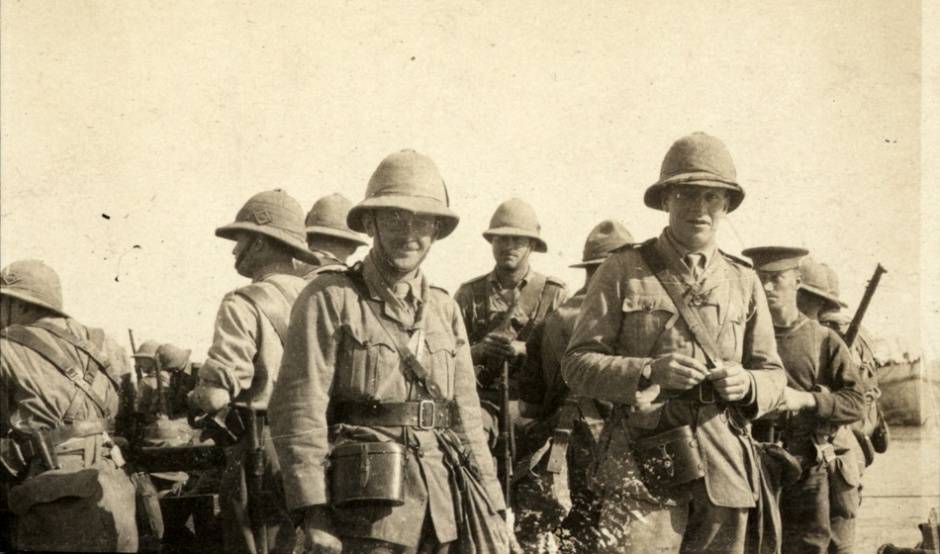
Officers from the Ceylon Planters Rifle Corps in Egypt, c. 1914-1915
Ceylon Planters Rifle Corps at Gallipoli
European tea and rubber planters established the Ceylon Planters Rifle Corps (CPRC) at Kandy in the central highlands of Ceylon (modern-day Sri Lanka) in 1900.
Following the outbreak of war in August 1914, the CPRC sent a 237-strong force under the command of Major John Hall Brown to Egypt. Arriving in October, it initially helped defend the vital Suez Canal waterway against Ottoman Turkish attack. In December the unit joined the newly formed Australian and New Zealand Army Corps (ANZAC), being attached to Lieutenant-Colonel William Malone’s Wellington Battalion.
The planters made a favourable impression on the Wellingtons during the months of gruelling desert training that followed. Lieutenant-Colonel Malone, a notoriously hard taskmaster, noted in his diary:
December 16th 1914: …a Company of Ceylon Planters Rifles have been attached to my Regiment. They are organised on the British lines and are at full strength. They are all gentleman Tea Planters, professional men, etc. We felt complimented at Genl Godley giving them to us. I had them over and inspected them and found them well-trained and really good hefty men. They all put their will into their work and every man uses his brains to do his bit thoroughly. They are alert and physically very fit. Their officers are really good. I wouldn’t mind swapping some of mine.... [1]
The CPRC served with the New Zealanders until March 1915, when the majority of the planters left for officer training; most went on to secure commissions in the British and Indian armies. The remaining 70-odd members of the CPRC were committed to the Gallipoli campaign, the first group landing at Anzac Cove with Lieutenant-General William Birdwood’s ANZAC on 25 April. [2] Dubbed the ‘Tea Leaves’, they were attached to ANZAC headquarters, and served as Birdwood’s personal escort until the evacuation of the Anzac sector in December 1915. Described by Birdwood as a ‘a nice lot of fellows’, the men of the CPRC also dug trenches, laid wire entanglements, carried water, and served as snipers when needed. [3]
At least three Ceylon planters were killed at Gallipoli, and are buried in Beach Cemetery. Several former members of the CPRC also died during the campaign serving with other units.
[1] John Crawford (ed.) No Better Death: The Great War Diaries and Letters of William G. Malone, Exisle Publishing, Auckland, 2014, p. 101
[2] ‘Tea Leaves-Ceylon Planters Corps-General Birdwood’s Guard’, Sydney Morning Herald, 6 September 1916, pg. 7 http://trove.nla.gov.au/newspaper/article/15701762
[3] ibid


Community contributions